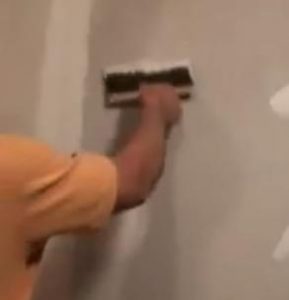Is Tainted Chinese Drywall Destroying your Home and Endangering your Family?
By Mark J. Donovan
|
|
Drywall imported from China between 2001 and 2007 has been found to contain chemicals that appear to be producing a health threat to humans and homes. Drywall imported from China during this timeframe is commonly referred to as Hazardous Chinese drywall, Tainted Chinese Drywall, and Contaminated Drywall. Chinese drywall was imported into the U.S. during this period due to the housing boom, and because of major hurricane damage that was sustained in the southern U.S. states in 2004 and 2005.
Unlike drywall imported from Mexico and Canada, Hazardous Chinese drywall has been confirmed to contain Sulfur, high concentrations of Strontium, and Phosphogypsum, a radioactive phosphorus substance. |
Apparently these chemicals are outgassing from the drywall, and when combined with carbon monoxide, are producing unhealthy effects on both the home and its occupants. Outgases produced from the Hazardous Chinese drywall are smelly and corrosive. The smell is akin to rotten eggs, and the corrosive element attacks electrical and mechanical equipment within the home, including air conditioning systems, appliances, electronics, electrical wiring and copper plumbing.
They also report that these symptoms abate when they leave their homes, and return when they go back to their homes. The CPSC, however, has yet to confirm causality between the Hazardous Chinese drywall and the symptoms described in these reports. They continue though to investigate this issue, and look for a relationship between the two, and to determine if there are any long term health effects.
How to Check for Hazardous Chinese Drywall in your Home
Reports indicate that Hazardous Chinese drywall was used in U.S. home construction between 2001 and 2007. Tell tale signs and methods for determining whether or not you have Hazardous Chinese drywall in your home include:
- The smell of foul rotten eggs within your home, particularly on hot, humid days.
- The smell of ammonia.
- Corrosion on electrical wiring and copper plumbing fixtures (Look for blackened surfaces on wiring, but don’t touch live electrical wires!)
- Corrosion on Air Conditioning Systems. Again, look for blackened surfaces.
- Go up in your attic and look at the back side of the drywall to see if it is labeled with “Knauf”, “Knauf Plasterboard Tianjin (KPT), and/or “Made in China”. Note, just because you do not see these markings on the ceiling drywall doesn’t mean you do not necessarily have Hazardous Chinese Drywall in your home. It just means it was not used on the ceiling.
- Wherever possible check for labels on the backside of the drywall in other places, for example in laundry rooms, basements, and other places where the drywall was left unfinished.
What to Do if You Suspect Hazardous Chinese Drywall in your Home
If you think your home has Hazardous Chinese drywall in it, your best bet is to first contact an environmental testing company and have it tested. If it indeed is Hazardous Chinese drywall, then contact your builder and homeowner’s insurance company.
| The only proper solution is to completely remove and replace the existing drywall. However do not attempt to remove the drywall yourself. Instead contact an abatement company who specializes in Hazardous Chinese drywall removal.
Once you have confirmed Hazardous Chinese drywall in your home, there are number of steps you can take to mitigate the negative effects of it until you have it removed.
|
 |
For more information see the Consumer Product Safety Commission.
For information on repairing a large drywall hole, see the “How to Repair a Large Drywall Hole” Ebook from HomeAdditionPlus.com. The “How to Repair a Large Drywall Hole” Ebook provides step-by-step instructions on how to repair your damaged wall so that it looks as good as new.
See HomeAdditionPlus.com’s Drywall Calculator
Related Information
- Where to use Greenboard Drywall
- Detailed Instructions on Installing Drywall
- How to Install Corner Bead
Additional Drywall Installation Resources from Amazon.com
 |
 |
Free Home Addition Price Quotes with No Obligation!
Fill out our 3-5 minute quick and easy form, and receive a free price quote on a house addition from one of our prescreened and licensed home addition contractors. This process is free and there is no obligation to continue once you receive your house addition price estimate.

